
6 minute read
Unsung heros
from Segment magazine 2
Matt Philp looks at the hugely important but underappreciated role played by native insects in New Zealand’s ecosystems and agriculture.
Their numbers are legion, they’re crucial players in healthy ecosystems and, according to some accounts, they’re on the brink of a calamity that will change their world and ours, yet insects fail to pierce our consciousness in the way of more charismatic fauna.
Advertisement
“Insects are hugely underappreciated”, laments University of Auckland ecologist Professor Jacqueline Beggs.
They’re also a puzzle that’s still only partly understood — even by experts who have devoted careers to them. New Zealand, for example, is thought to have 20,000 insect species; less than half have been described and named.
But don’t mistake anonymity for irrelevance.
“Insects are at the heart of so many critical ecosystem processes”, Beggs says. “They’re the herbivores who are eating plants and helping to recycle nutrients. They’re doing the pollination and seed dispersal. They play a critical role in the decomposition of dead materials both plant and animal, and are therefore crucial to nutrient cycling and the building up of soils. They play an important role in predation and parasitism, helping to keep down pests (of course, sometimes they are the pests) and as food sources for different taxa. And they’re fungivores, feeding on fungi and helping their dispersal and nutrient cycling. There’s almost no ecosystem process that doesn’t involve insects.”
Who are these tiny unsung heroes? How can we ensure they thrive? And how do we make the most of their talents?
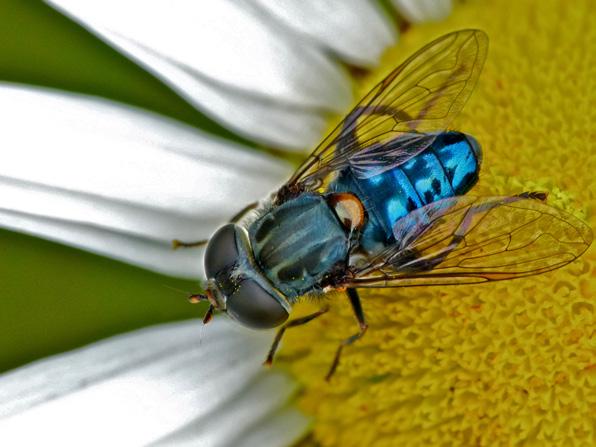
Flies such as the Blue hover fly (Helophilus hochstetteri) are important pollinators in New Zealand.
©Steve Kerr (CC BY)
Plant & Food Research’s Dr David Pattemore says that New Zealand’s native pollinators are distinctive. “In most of the world, you have bees and butterflies being really important groups of pollinators. But here in New Zealand we have flies and a great diversity of moths and beetles, and we find in native systems that it is often these other insects that are visiting native flowers.”
Because of these differences, insect decline is likely to have unique, unpredictable impacts on the functioning of New Zealand’s ecosystems.
When it comes to agriculture, “We’re developing a pretty strong picture around the role of native species and we are finding flies have been especially underappreciated,” Pattemore adds. “We’ve documented quite a number of these wild species, particularly flies and native bees, which turn up again and again in different crops in different regions.”
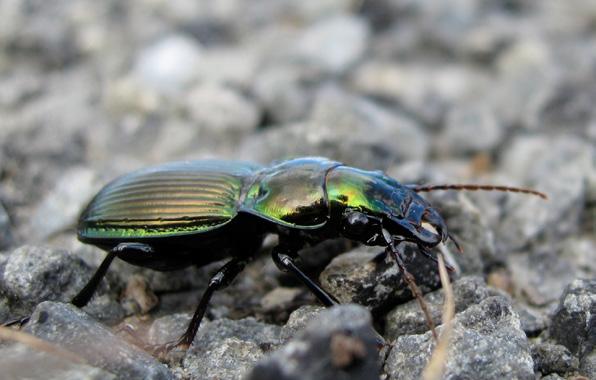
Alexander beetle (Megadromus antarcticus) helps control slug populations in the Canterbury region.
© Jon Sullivan (CC BY)
That said, there is a pressing need to promote greater diversity of insects on our farms. If Northern Hemisphere reports of alarming declines in populations of bees and other insects are accurate, there’s no reason to think this country won’t be at risk. Spreading the pollination workload would cushion the impact.
“We know that pollinator diversity improves crop yields”, says Plant & Food Research scientist, Dr Brad Howlett. “Honey bees are not always the best crop pollinators, so fostering diversity increases your chances of having the most efficient pollinators in your crop, and these insects may be active when honey bees are not. For example, bumble bees are better pollinators of clover than honey bees, plus they are active earlier and later in the day than honey bees are.”
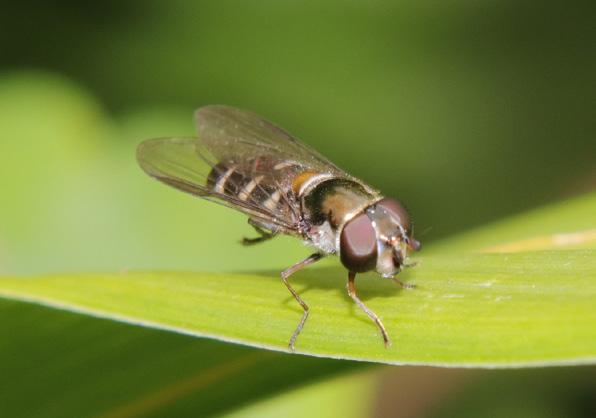
Large hover fly (Melangyna novaezelandiae) pollinates a range of native and exotic plants.
©Kathy Warburton (CC BY)
Howlett and colleagues are involved in several initiatives to promote on-farm insect diversity. One area of focus is on providing organic material to support insect larvae and pupae. Another is native plantings (see next page).
Flexibility is key, explains Howlett. “If a farmer is growing a complex mix of crops, for example, we’d look at what sort of things need to be encouraged on that farm. It might be native plantings; it might be providing resources for larvae that target specific species. So it’s about following the insects, knowing which ones to target and then helping the farmer to manage those practically”.
Another question that needs answering is: how are New Zealand’s insects faring overall? A 2019 global scientific review found that 40% of insect species are declining and a third are endangered. In the last quarter of a century or so, total insect biomass has been falling by 2.5% a year.
And here? The Department of Conservation lists 280 species of invertebrates as conservation priorities, many of which are insects. But the bigger picture is unclear according to Pattemore. “We could be heading into trouble without even realising it.”
One reason for a lack of data in this country compared with, say, Europe, is that we don’t have centuries of amateur entomology groups repeating sampling year after year. But there are a couple of ways to close the knowledge gap. One is to track down studies that have been done here and replicate them. Another is to analyse specimens held by museums and other collections. “With colleagues at Landcare Research, we’re keen to explore whether genetic information contained in those samples could provide insights into how populations have changed over time.”
Certainly, it would be unwise to think that we’ve been untouched. Agricultural intensification, loss of habitat, the liberal use of sprays — the causes of insect decline are all in play here.
Beggs applauds efforts to save endangered insects, such as the Mercury Island tusked weta. But with 20,000 insect species out there, “We really have to work at the community or ecosystem level,” she says. “How can we restore a bit more function to make sure we’re protecting things for groups that we don’t even know about?”
Riparian plantings, more wasp control and reducing sprays on farms and in orchards will help. But the public can do its bit, too. “One of the best things you can do is increase the amount of native vegetation in your garden — I shudder every time I see another large patch of lawn. And, people, put your sprays away!” •
Designing on-farm native habitats — enhancing insect diversity for crop pollination and protection
“Creating more productive, resilient farms and conserving New Zealand’s insect diversity are not incompatible goals,” says Plant & Food Research’s Biodiversity and Pollination Scientist Dr Melanie Davidson.
On the Canterbury Plains, an area that has suffered a notable loss of native habitat and animal diversity, Davidson and colleague Dr Brad Howlett believe it is possible both to boost crop production and simultaneously enhance New Zealand’s insect diversity.
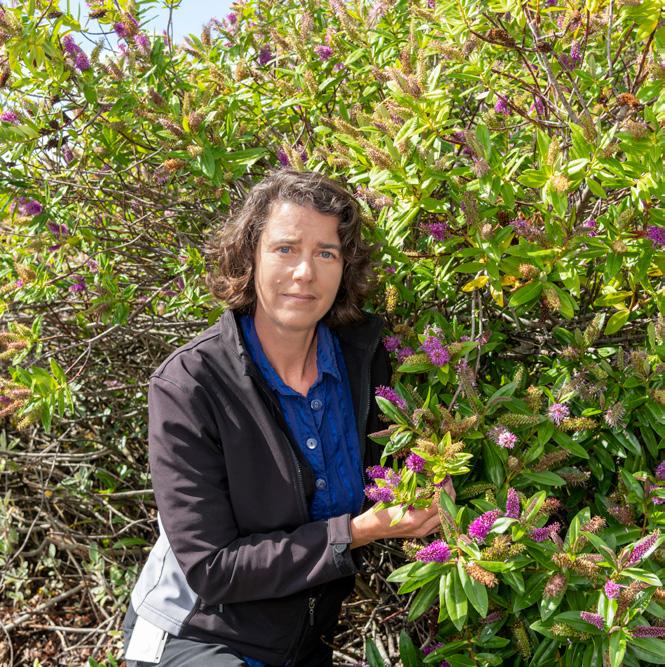
Dr Melanie Davidson, Biodiversity and Pollination Scientist.
“The enormous benefits that New Zealand’s insect fauna can play in pollinating crops and controlling insect pests has not been properly considered”, says Davidson. “Instead, we’ve tended to introduce insects from overseas or rely heavily on pesticides for crop production. But New Zealand’s native insects are a valuable untapped resource for farmers.”
Howlett has spent more than a decade studying which native insects could pollinate crops on the Canterbury Plains. “We already have small numbers of native insects contributing to crops like white clover, onion, carrot, brassicas and radish. And while we may only have 28 native bee species, they are good crop pollinators — often an equal match for the introduced honey bee.”
Davidson and Howlett have been working with local councils, trusts, community groups and key primary industries that represent arable, dairy and beef and lamb farms on the Canterbury Plains towards designing native plant habitats aimed at increasing the abundance of native insects where they are not currently supported by the environment.
“Native bush supports our native insects in many ways”, says Davidson. “It provides nectar and pollen for food, protection from the weather, nesting sites and leaf litter, which is used by native flies and beetles to feed and shelter in. Because we now have a much better understanding of the beneficial roles played by different native insect species on farms, we can design native habitats to build their populations.”
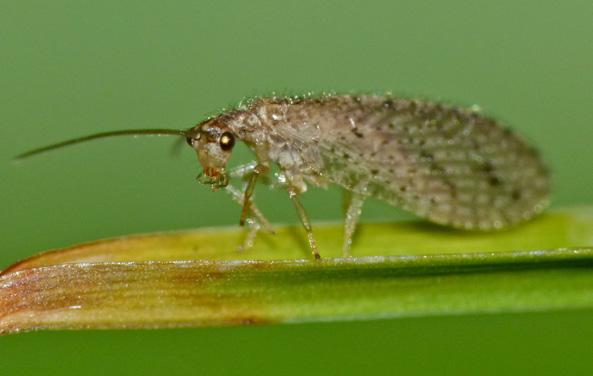
Tasmanian lacewing (Micromus tasmaniae) is a predator of aphids in crops.
© Steve Kerr (CC BY)
Davidson and Howlett are employing an “ecological network” approach to select the best mix of native plants. “In addition to knowing which insect species to target for on-farm benefits to production, we have increased our knowledge of which native plant species these insects use for nectar and pollen”, says Howlett.
With this knowledge, the scientists can map how native insects interact with native plants and crops so that farmers gain the benefits of both pollination and pest suppression.










